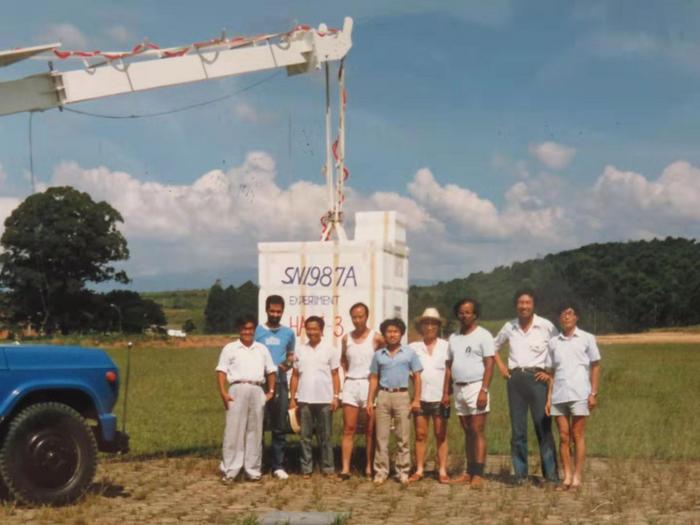Purpose of the flight and payload description
The objective of the flight was to observe Gamma Rays and X-Rays from the SN1987A supernova that was discovered in the large Magellan cloud the year before.
Two different payloads were onboard:
A Gamma-Ray detector developed at the University of Southampton, UK consisting of lithium-germanium detector to measure the supernova's gamma rays.
A X-Ray detector called HAPI-3 developed by the Institute of High Energy Physics (IHEP) of the Chinese Academy of Sciences. The main detector was a NaI(Tl)/CsI(Tl) composite crystal. Its measurement area was of 314 cm2, the detection energy range was 30~400 keV, the energy resolution was 23% at 60 keV, and the time resolution was 0.1 ms. The detector could measure the energy spectrum and time-varying properties of celestial bodies, having good background suppression ability and high detection sensitivity. Although the flight was unsuccessful, the telescope had an stable performance.
Details of the balloon flight
Balloon launched on: 2/3/1988 at 16:00
Launch site: Balloon Launch Sector, Cachoeira Paulista, Brazil
Balloon launched by: CLB / INPE
Balloon manufacturer/size/composition: Zero Pressure Balloon 120.000 m3
End of flight (L for landing time, W for last contact, otherwise termination time): 2/3/1988
Balloon flight duration (F: time at float only, otherwise total flight time in d:days / h:hours or m:minutes - ): 6 h
Landing site: Payload lost.
Payload weight: 783 kgs
The balloon was launched by dynamic method from the INPE balloon station of Cachoeira Paulista on February 3, 1988. After a nominal ascent the balloon reached a float altitude of 40 kilometers. However after six hours of flight, failures in the telemetry system caused the balloon lost contact with the Launch Center. Although the equipment was equipped with two omega transmitters used in air navigation and antennas capable of emitting signals to facilitate its location the payload was never recovered.
External references
- A infraestrutura do INPE para lancar balao cientifico Elisete Rinke dos Santos, editorial Transtec, 1993
- Instrumentação a bordo de balões amplia conhecimento do universo Revista Espacial Año XVII Nº 68 - Marzo/Abril 1988
- Lançamento conjunto de balão em Cachoeira Paulista Informe INPE em dia Nº 59, 1988
278If you consider this website interesting or useful, you can help me to keep it up and running with a small donation to cover the operational costs. Just the equivalent of the price of a cup of coffee helps a lot.


